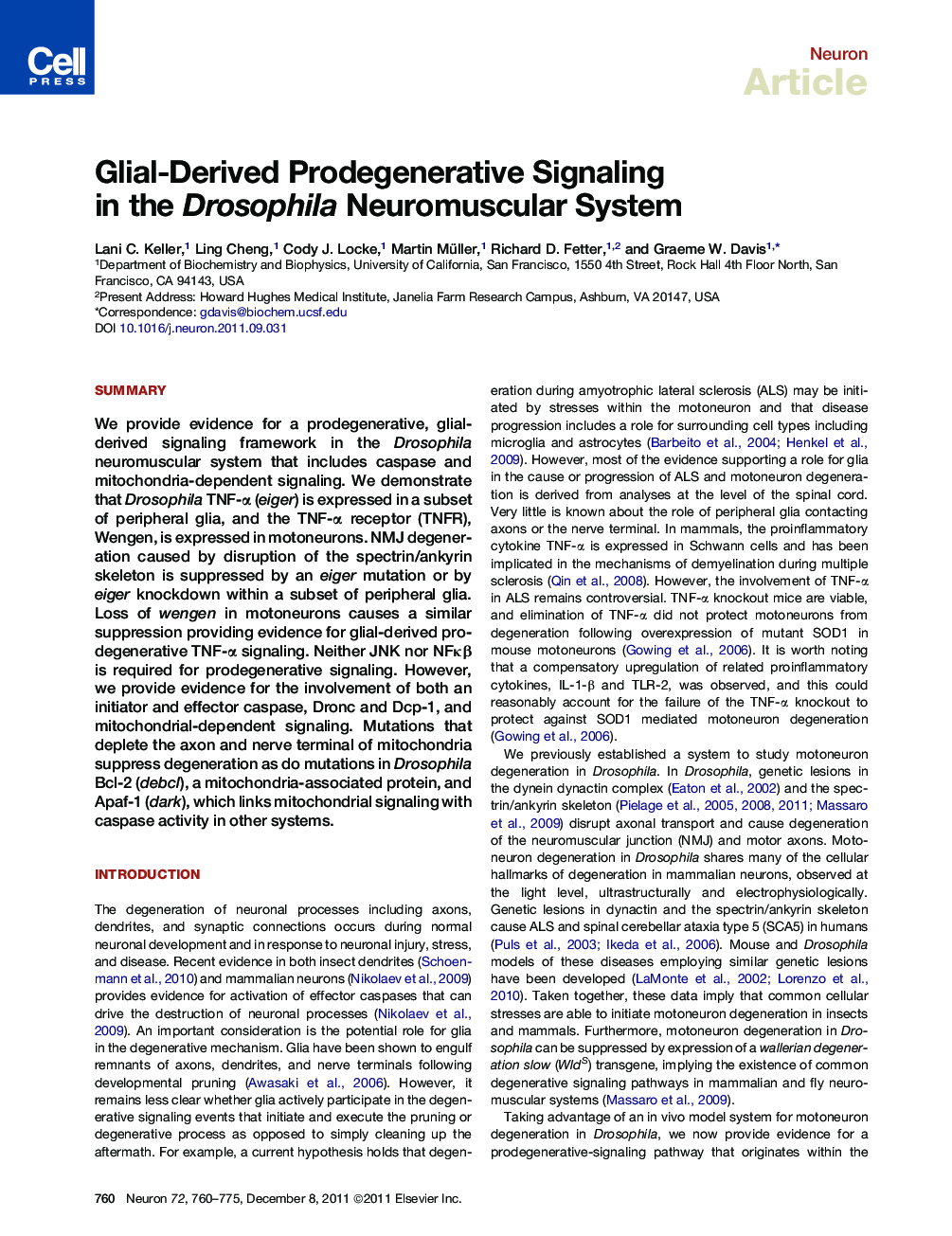| Article ID | Journal | Published Year | Pages | File Type |
|---|---|---|---|---|
| 4321432 | Neuron | 2011 | 16 Pages |
SummaryWe provide evidence for a prodegenerative, glial-derived signaling framework in the Drosophila neuromuscular system that includes caspase and mitochondria-dependent signaling. We demonstrate that Drosophila TNF-α (eiger) is expressed in a subset of peripheral glia, and the TNF-α receptor (TNFR), Wengen, is expressed in motoneurons. NMJ degeneration caused by disruption of the spectrin/ankyrin skeleton is suppressed by an eiger mutation or by eiger knockdown within a subset of peripheral glia. Loss of wengen in motoneurons causes a similar suppression providing evidence for glial-derived prodegenerative TNF-α signaling. Neither JNK nor NFκβ is required for prodegenerative signaling. However, we provide evidence for the involvement of both an initiator and effector caspase, Dronc and Dcp-1, and mitochondrial-dependent signaling. Mutations that deplete the axon and nerve terminal of mitochondria suppress degeneration as do mutations in Drosophila Bcl-2 (debcl), a mitochondria-associated protein, and Apaf-1 (dark), which links mitochondrial signaling with caspase activity in other systems.
► Identification of glial-derived prodegenerative signaling at the Drosophila NMJ ► TNF-α is expressed in peripheral glia and is necessary for neuromuscular degeneration ► The TNF-α receptor is expressed in motoneurons and is necessary for NMJ degeneration ► Mitochondria-dependent signaling participates in prodegenerative mechanism
